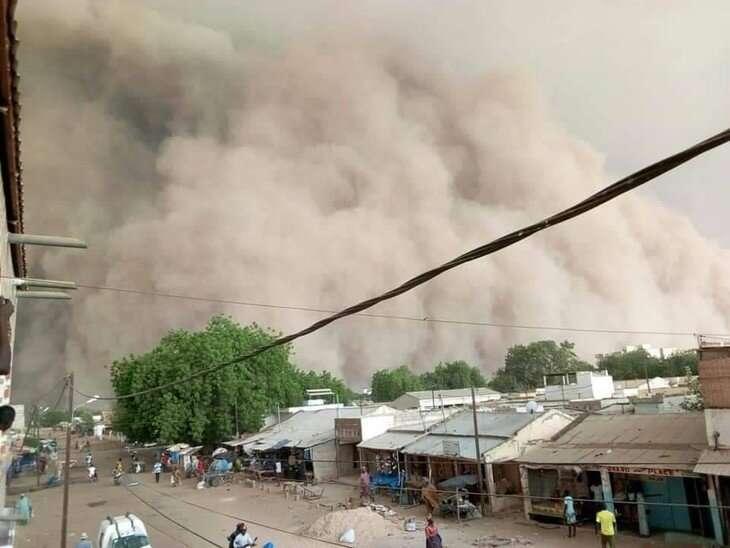Researchers track dust pollution, health to spot dangers in West Africa

Comparing dust simulations and health data for Senegal, an international team of researchers found dust to be responsible for poor air quality, which is followed by a rise in poor health outcomes.
The team, led by Gregory Jenkins professor in meteorology and atmospheric science, tracked dust concentrations during 2015-16 across Senegal, with particular focus on the heavily populated capital of Dakar.
They used weather simulations and instruments to find unhealthy levels of dust from December through March. In other areas of Senegal, unhealthy air was observed for more than 90 percent of the time. The findings were reported in GeoHealth.
According to U.S. Environmental Protection Agency standards, dust particles of less than 10 and 2.5 microns are monitored and are considered unacceptable at 150 micrograms per cubic meter and 35 micrograms per cubic meter, respectively. Levels above those occurring more than once over three years is unacceptable. A human hair is about 50 microns in diameter.
Air pollution is a cause of respiratory disease in West Africa, according to the World Health Organization.
Researchers surveyed health officials to create a geolocated dataset for health conditions. During the summer, researchers reported a rise in related diseases such as asthma, bronchitis and acute respiratory infections in Dakar.
They said weather models pointed to the Sahara Desert as the primary dust source. However, they added that other pollution factors likely contributed to the negative air quality, particularly in more populated areas because respiratory illnesses continued to climb during the summer months in Dakar.
Although there are only six ground-based sensors in Dakar, researchers were able to use them to determine the concentration and size distribution of the dust particles.
The strongest connection between air quality and respiratory health was found in urban areas, suggesting that industrial pollution, vehicle emissions and household factors also played a role. Biomass burning also contributed negatively to air quality.
Researchers focused primarily on Dakar because both health and air quality data are difficult to come by in areas outside the capital.
"Air quality data is very poor across the country," Jenkins said. "Most of the air quality data is from the capital. Health data is hard to get, too. In Dakar we have the best chance of getting enough data to evaluate. The air quality in this region—particularly in the winter months—is unbelievably bad."
Using health data, researchers found nearly one in 10 children between the ages of one and four experienced acute respiratory infections in one area of Senegal. They found elevated infection levels across the nation. Weather models showed dust pollution is highest in the northern areas of Senegal but the region lacks adequate instrumentation to confirm the models.
"Until we get more observations around the country, it's impossible to know what exactly is causing these poor health outcomes," Jenkins said. "The health data itself is alarming to some degree. We actually see big signals in the summer, not just the winter months. This awareness could help policymakers in Senegal do more to protect their people."
Researchers said improving the ground-based measurements across the region—some of the least monitored populated areas worldwide—would greatly improve dust forecasting and would allow for a warning system to alert residents when hazardous conditions are present.
"In many of these remote areas where we forecast severe dust pollution, we have no measurements whatsoever," Jenkins said. "People are not informed about the environmental conditions, especially in low-income regions where the impact is very large. We have to do more to address this issue."
Provided by Pennsylvania State University


















